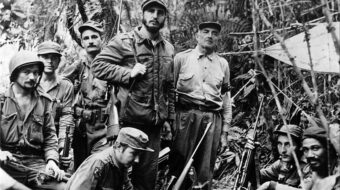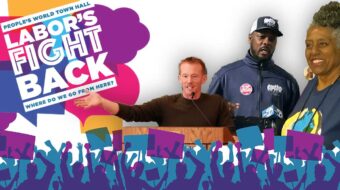NEW YORK – The year 2011 should serve as a reminder of how far the U.S. has come on job safety issues – and how far it has yet to go.
That’s because this year marks the unhappy anniversaries of two of the worst disasters, in terms of deaths on the job, that ever befell workers.
The first, and the one that galvanized the original job safety movement, was the 1911 Triangle Fire in lower Manhattan. That’s when 146 textile workers – all but a few of them young immigrant women – were trapped on the burning upper floors of the Asch Building, which housed their garment sweatshop, the Triangle Company.
The one fire escape ended above the ground and quickly became overloaded and collapsed. The doors were padlocked, supposedly to prevent “theft” by the workers. One worker escaped by sliding down the cable of the nonfunctioning elevator.
The fire department ladders weren’t tall enough to reach them. Hoses were of little use.
Others faced a gruesome choice: Burning to death or jumping. Most jumped.
Conditions at Triangle led to a whole host of pro-worker legislation, starting with fire safety codes. Triangle also drew attention to the plight of workers in general. That, in turn, influenced pro-worker legislation of the New Deal – pushed by FDR’s Labor Secretary Frances Perkins, who, as a social worker, witnessed the deaths at Triangle from across the street.
Garment workers unions had tried to organize Triangle and other garment makers the year before. The citywide strike won raises for the workers, but not unions at Triangle.
“If the union had won, we would have been safe,” said strike leader Rose Safran, who survived the fire. “Two of our demands were for adequate fire escapes and for open doors from the factories to the street. But the bosses defeated us and so we didn’t get the open doors or the better fire escapes. So our friends are dead.”
The second disaster killed almost 3,000 workers: The al-Qaeda terrorist attack on Sept. 11, 2001. It destroyed the Twin Towers of the World Trade Center, also in Lower Manhattan, killed all the passengers aboard four terrorist-commandeered jetliners, and damaged the Pentagon in the D.C. suburbs.
As at Triangle, some Trade Center workers faced burning to death, and jumped.
Among the dead were 343 New York Fire Fighters and their priest. Of the 3,000 killed, an estimated 630 were unionists. More have died since then, from the effects of diseases contracted as they worked among the Twin Towers ruins, breathing in particulates and toxic gases, with inadequate or no protection.
While deaths on the job are down from more than 30,000 per year in the early 1900s to approximately 4,000 now, both tragedies show the job safety safety net still has holes: Employers are not held responsible for deaths on the job. The Triangle owners were charged with manslaughter. They were acquitted, because the prosecution couldn’t prove “beyond a reasonable doubt” a direct cause and effect between their actions, the locked doors and the deaths, according to Leon Stein’s The Triangle Fire.
Modern federal law – the Occupational Safety and Health Act – still treats on-the-job deaths lightly. Maximum fines are low, and the feds can charge company owners and managers only with misdemeanors, punishable by 6-month jail terms. Prosecutors usually do not bring charges, because misdemeanors are not worth the trouble.
The Fire Fighters (IAFF) found one reason for so many deaths at the Trade Center, and in New Orleans after Hurricane Katrina, is because first responders cannot communicate with each other. There was no common radio frequency specifically allotted to emergency personnel, such as police, Fire Fighters and EMTs.
IAFF and other first responders have pushed for years to allocate a specific part of the radio spectrum to emergency responders. But the legislation has been hung up on Capitol Hill in a dispute over whether that spare spectrum space – which is now available from broadcasters who switched from digital to analog TV transmission – should be turned over to the first responders, or auctioned off by the government.











